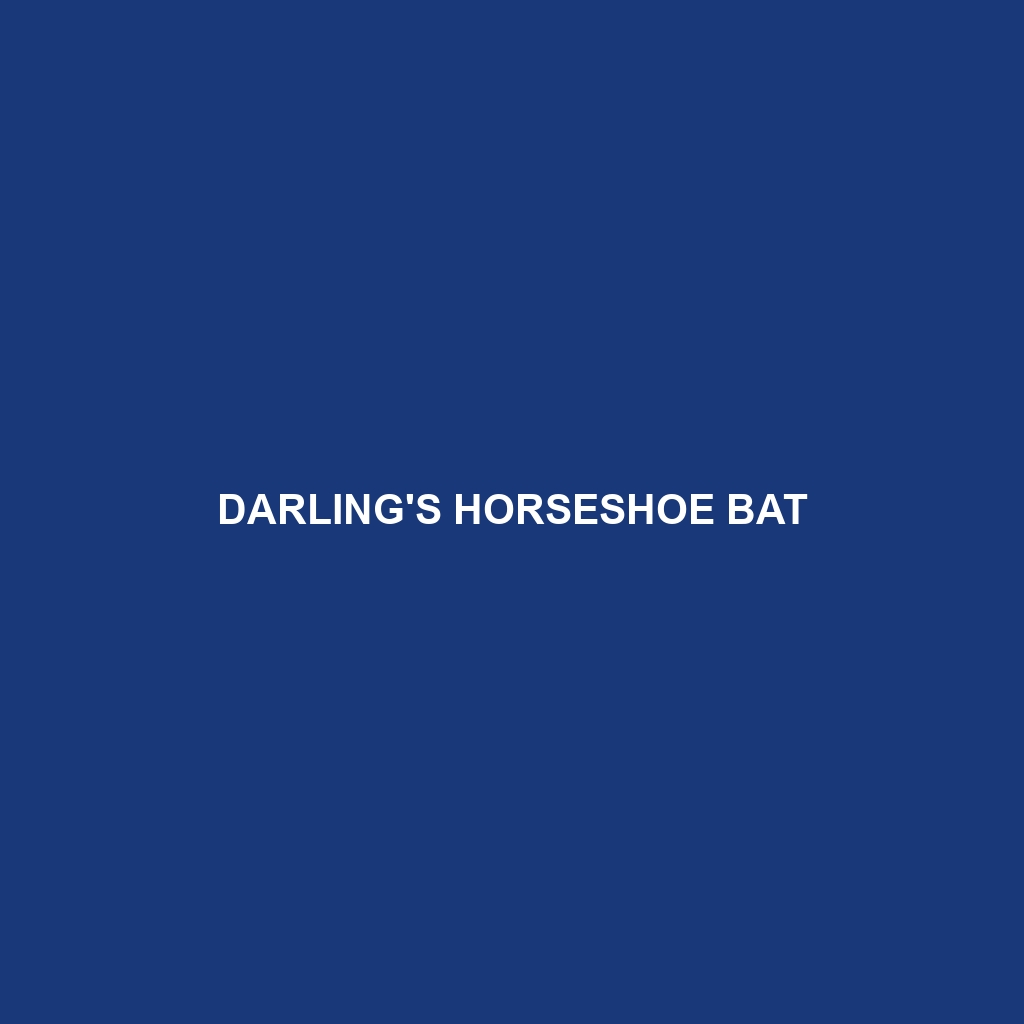Damara Horseshoe Bat
Common Name: Damara Horseshoe Bat
Scientific Name: Rhinolophus damarensis
Habitat
The Damara Horseshoe Bat is primarily found in southern Africa. Its range includes various geographic locations, particularly within Namibia, Botswana, and parts of South Africa. This species prefers dry woodland, savannahs, and rocky areas, where it roosts in caves, abandoned mines, and tree hollows, providing a suitable environment for its survival.
Physical Characteristics
Measuring approximately 5 to 7 centimeters in body length, the Damara Horseshoe Bat has a distinctive horseshoe-shaped nose that aids in echolocation. Its fur is typically brown to reddish-brown, offering excellent camouflage among the foliage. The bat’s wingspan can reach up to 30 centimeters, and it possesses long, pointed ears that enhance its hearing capabilities, crucial for navigating through the dark.
Behavior
This bat species exhibits primarily nocturnal behavior, emerging at dusk to hunt for insects. Known for their social nature, Damara Horseshoe Bats typically roost in small to medium-sized colonies. Their echolocation abilities are highly developed, enabling them to identify prey and navigate effectively in their diverse habitats. Roosting sites are often chosen for their proximity to feeding areas.
Diet
The diet of the Damara Horseshoe Bat consists mainly of insects, particularly moths and beetles. Utilizing echolocation, they capture their prey mid-flight, showcasing remarkable agility and precision. This bat plays a critical role in controlling insect populations, helping to maintain ecological balance.
Reproduction
The reproductive habits of the Damara Horseshoe Bat involve a breeding season that typically occurs in late summer. Females give birth to a single pup after a gestation period of about 45 days. Parental care is essential, as mothers will often form nursery colonies to enhance the survival of their offspring, and pups start flying within 3 weeks of birth.
Conservation Status
According to the IUCN Red List, the Damara Horseshoe Bat is currently classified as Near Threatened due to habitat loss caused by agricultural expansion and mining activities. Conservation efforts are necessary to protect their roosting sites and ensure the sustainability of their populations.
Interesting Facts
The Damara Horseshoe Bat is known for its unique social behaviors. They can often be seen engaging in playful grooming within their colonies. Their echolocation ability is particularly acute, capable of detecting the smallest of movements in the air, making them highly efficient nocturnal hunters.
Role in Ecosystem
The Damara Horseshoe Bat plays a crucial role in its ecosystem as a natural pest control agent. By regulating insect populations, they help prevent crop damage and promote biodiversity. Additionally, their presence in various habitats is indicative of ecosystem health, making them important for ecological studies and conservation efforts.
